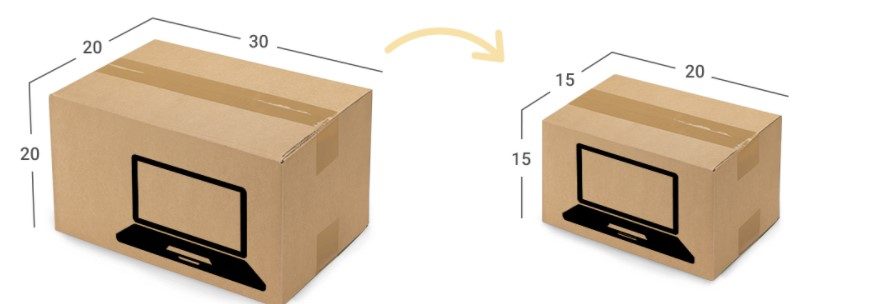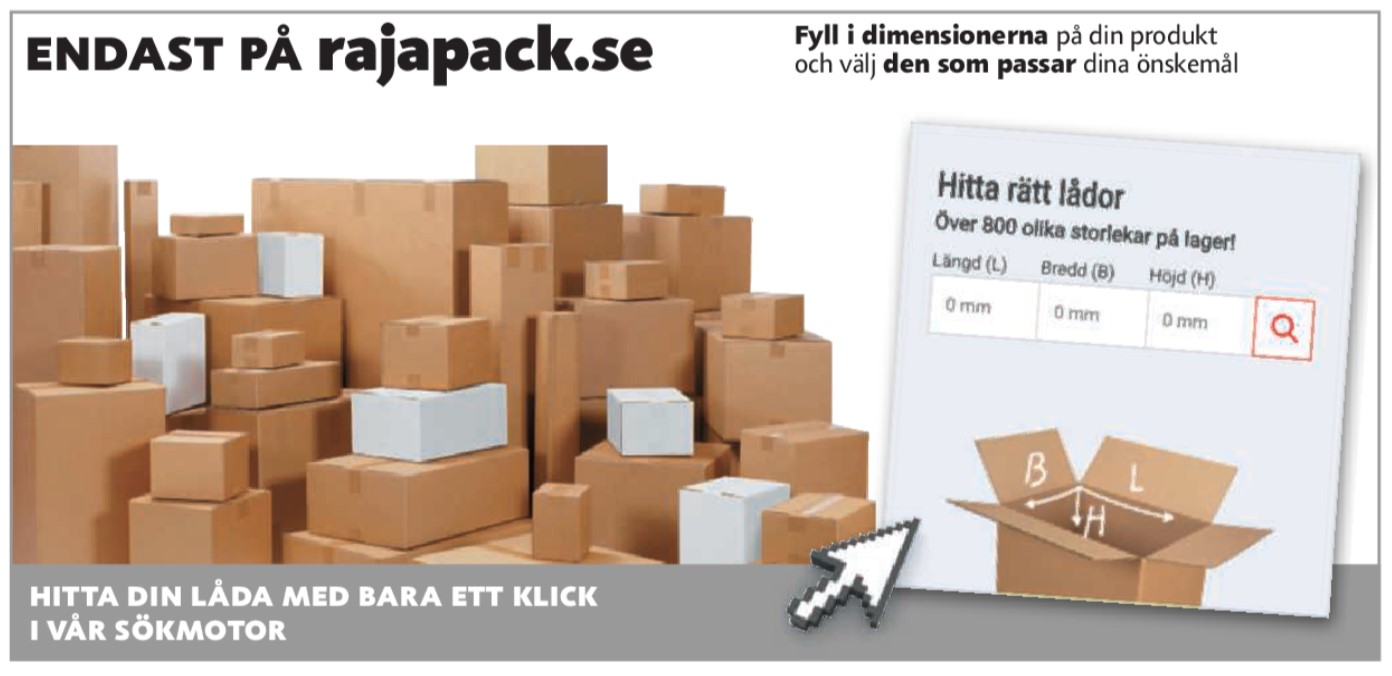Did you know that both weight and volume can be taken into account when carriers determine how much to charge for a package? The actual weight of the package is sometimes compared to a fictitious calculated weight called volume weight, and in some cases the higher weight is actually charged. By optimising the volume weight of your shipments, you as a business owner can make significant savings on transport costs. When volume weight is reduced, the impact on the environment is also reduced, as a smaller package means that more parcels can fit in the same truck or plane overall. Win win!
What is volume weight and how is it calculated?
A shipment can be light but large at the same time, and transport costs are affected by how much space the shipment takes up in the hold. Volume weight is a way for shippers to convert the volume of a package into volume calculated weight, which takes into account the space the package takes up in a truck or aircraft. Volume weight is calculated using the following formula:
L x W x H x conversion factor
Where the conversion factor for land transport, for example, is 280.
If a carrier uses volume weight in their calculations, it is common for volume weight to be invoiced in cases where they exceed the actual weight of the package. For example, a small and heavy parcel may be invoiced against the actual weight, while a bulky but lightweight parcel is invoiced against the volume weight. Let’s take an example.
Imagine you have two parcels of different sizes to be sent by truck. They contain similar products and weigh the same. Let’s say each package weighs 2 kg. The larger package measures 0.2 x 0.2 x 0.3 metres, which means that its volume weight is 3.36 kg. Since it is higher than the actual weight of 2 kg, in this case it is the volume weight that will be charged by the carrier. The smaller package has the dimensions 0.15 x 0.15 x 0.2, which means that its volume weight is 1.26 kg. As the volume weight of the second parcel is lower than its actual weight of 2 kg, it is the actual weight of 2 kg that will be invoiced.

When is volume weight used for invoicing?
There is no universal rule on when volume weight is taken into account, it varies and can be different for different carriers and services. Taking Postnord as an example, they charge for the highest weight or volume weight in the following four cases:
- Domestic parcel services as a contract customer or purchase via Send Direct
- International Parcel as a contract customer or International Parcel when purchased via Send Direct
- PostNord Pallet, only available for contract customers
- International express services
Read more about the rules on Postnord’s website. We at RAJA advise you to contact your freight forwarder if you are unsure how they calculate your shipments.
How to reduce your volume weight
Now that you’ve learned the weight of your packaging’s volume, it’s time to start thinking about how you can optimize this so you pay less money to transport air. Here are our tips.
Tip 1: analyse your current situation
If you want to reduce the volume weight of your shipments, the first step is to evaluate your current situation. What are the weight and dimensions of your current parcels? Are you usually invoiced by volume weight or actual weight? Which products do you send most often, and what are their dimensions? Do you find that you have a lot of empty space in your parcels, possibly resulting in a very high consumption of filler material? All of these questions can help you gain an understanding of whether packaging volume is a problem for you or not. If the dimensions of your cartons often do not match your most frequently shipped products, there may be a lot of money to be saved in transport.
This leads us unnoticed to the next tip…

Tip 2: choose the right packaging
At RAJA we are experts in packaging and stock over 3000 packaging products. Some mixed packaging tips from us:
- Filling material is lightweight and allows you to pack your products as close together as possible without risk of damage, so the volume can be pulled down safely. Bubble wrap is an efficient and popular choice, and kraft paper is an environmentally friendly alternative.
- Is it possible to send your products in bags instead of cartons? If possible, this could be a way to reduce volume. Even larger items can be sent in e-commerce bags, but it depends on the type of products you are sending.
- With variable boxes, you can adjust the volume of the packaging according to the volume your products take up.
- The size of the box should be based on the dimensions of your products. Find the right box by searching for your dimensions in our Boxselector tool.
- Contact RAJA’s packaging experts for a free consultation based on your unique needs and circumstances.
Stay in touch with us
- Subscribe to our newsletter for the latest packaging news and access to exclusive promotions
- Follow RAJA Sweden on Linkedin, Facebook and Instagram
- Check out our latest product catalogue – order a free copy or read the interactive catalogue online
Read the next blog post:
https://www.rajapack.se/blog-se/bubbelplast-vs-skumfolie/















